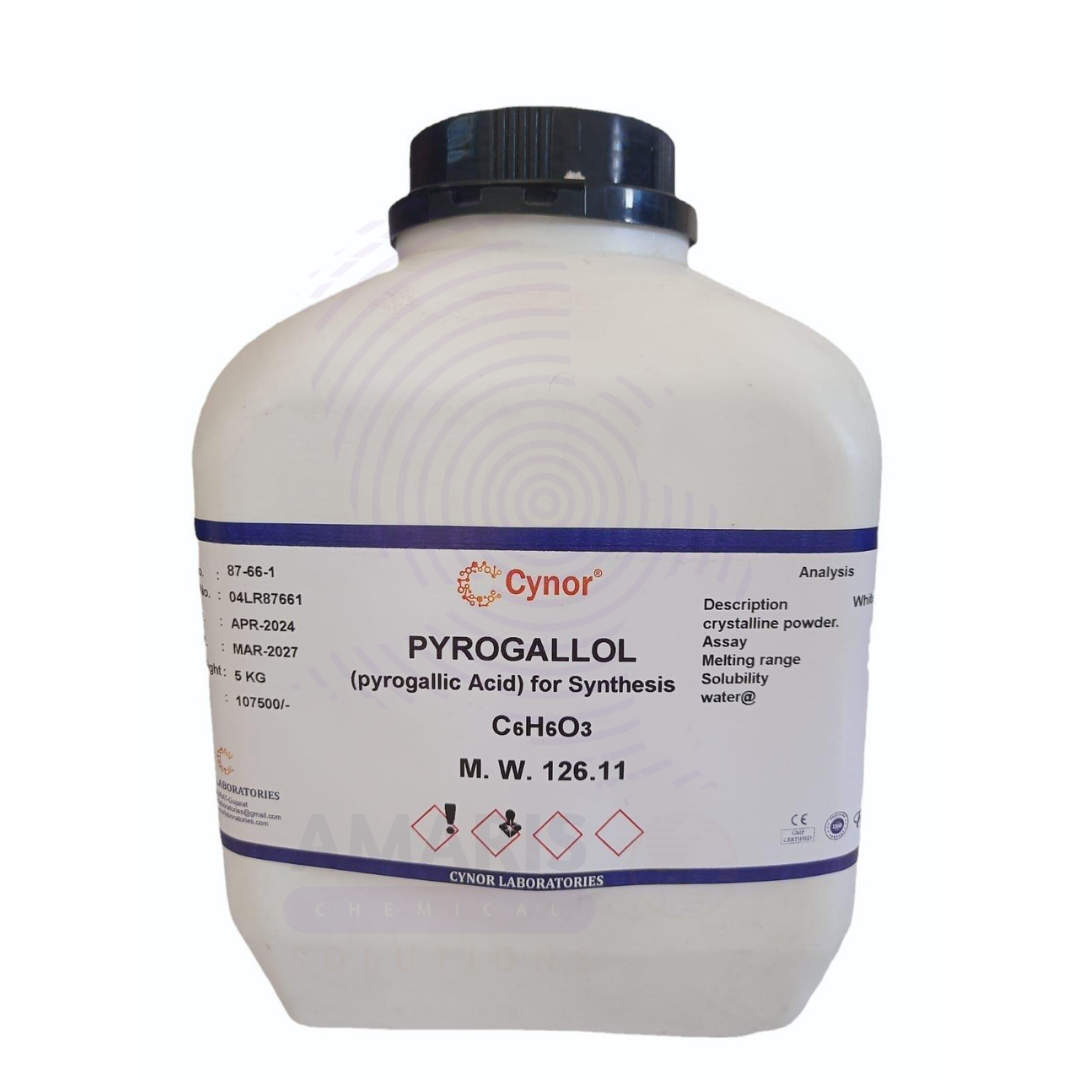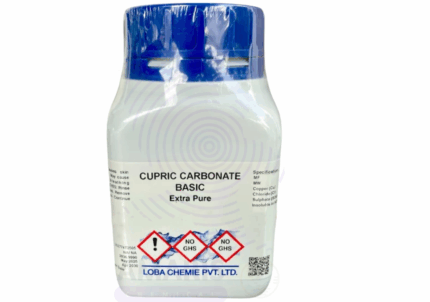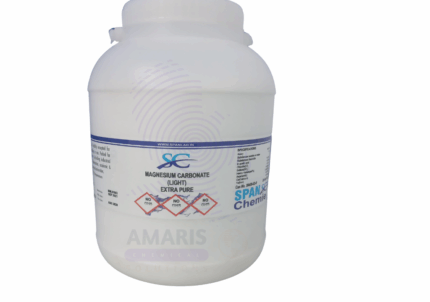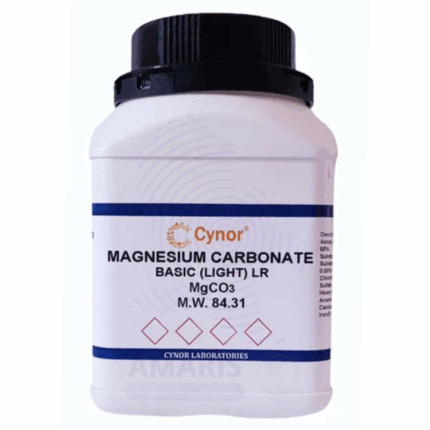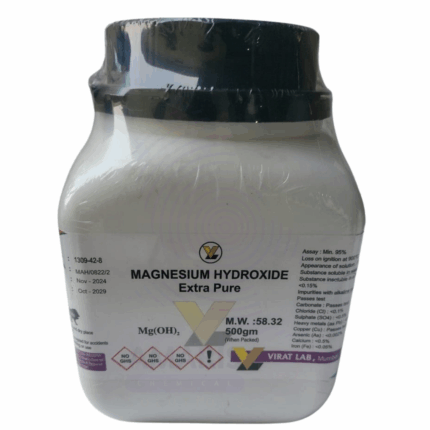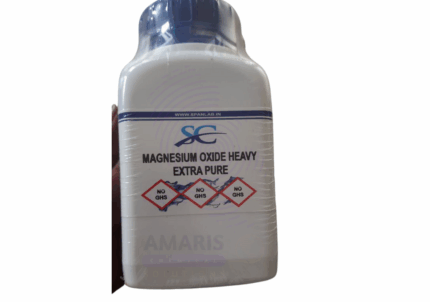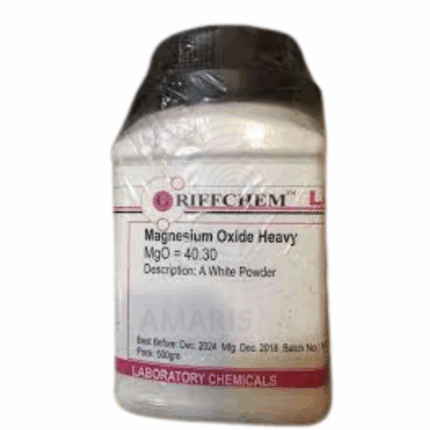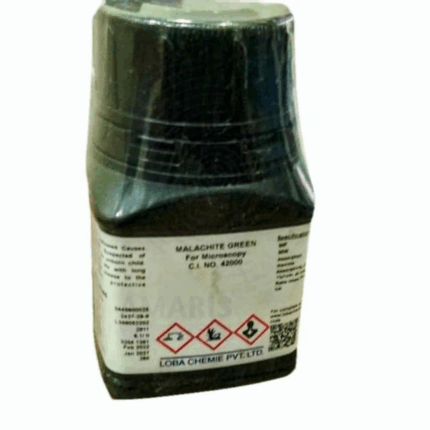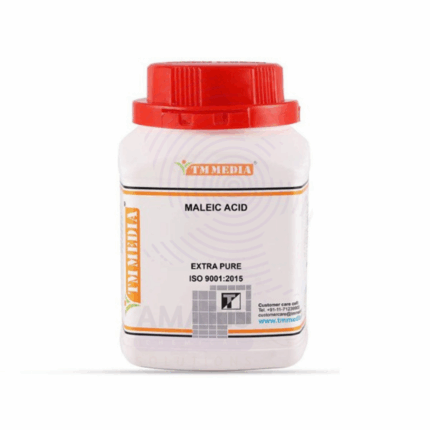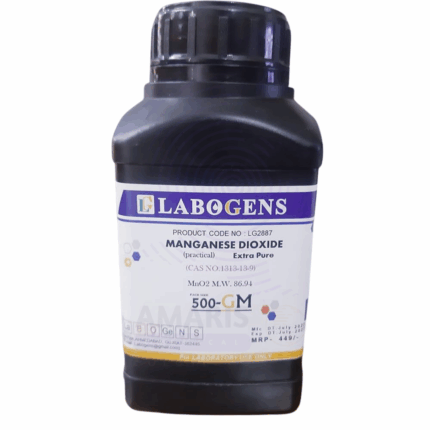
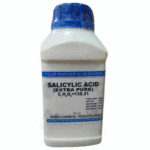
Pyrogallol Crystals Extra Pure
$ 18.00 Original price was: $ 18.00.$ 17.87Current price is: $ 17.87.
Pyrogallol Crystals Extra Pure are high-purity white to pale yellow crystalline solids with strong reducing properties. Widely used as a reducing agent in analytical chemistry and organic synthesis, they play an important role in oxygen absorption and measurement. Their antioxidant nature finds applications in pharmaceuticals and photographic development. Pyrogallol must be handled carefully as it is sensitive to oxidation by air and light, and can cause irritation upon contact. Proper storage in dark, airtight containers preserves its stability and performance.
Pyrogallol Crystals Extra Pure
PRIMARY USES
- Analytical Reagent & Laboratory Applications:
Used as a reducing agent in chemical analysis and spectrophotometry
• Serves in oxygen absorption and measurement in gas analysis
• Employed in organic synthesis as an antioxidant and reducing agent - Pharmaceutical & Cosmetic Industry:
Used in pharmaceutical formulations as an antioxidant
• Applied in hair dyes and coloring products - Chemical Industry:
Utilized in photographic developers and processing solutions
• Acts as a reagent in various chemical manufacturing processes
SECONDARY USES
- Laboratory Chemicals:
Used for calibration of oxygen analyzers and sensors
• Applied in research laboratories for redox reaction studies - Environmental and Green Chemicals:
Used in environmental monitoring for oxygen concentration measurement
1. Basic Identification Attributes
- Chemical Name: Pyrogallol
• CAS Number: 87-66-1
• HS Code: 2932.22.00
• Molecular Formula: C₆H₆O₃
• Synonyms:
- 1,2,3-Trihydroxybenzene
- Pyrogallic acid
2. Physical & Chemical Properties
Physical State: Crystals or crystalline powder
• Color & Odor: White to pale yellow, odorless
• Melting Point: 132 °C
• Boiling Point: Decomposes before boiling
• Density: 1.46 g/cm³
• Solubility:
- Soluble in water, alcohol, and ether
• pH Level: Slightly acidic in aqueous solution
• Vapor Pressure: Low
• Flash Point: Not applicable
• Stability: Sensitive to air and light; may oxidize
3. Safety & Hazard Attributes
- Hazard Class (GHS Classification):
- Harmful if swallowed (Category 4)
- Causes skin irritation (Category 2)
- Causes serious eye irritation (Category 2A)
- May cause respiratory irritation
• NFPA Ratings: - Health: 2
- Flammability: 1
- Reactivity: 1
• Exposure Limits: - No specific OSHA PEL or ACGIH TLV established
• Reactivity: - Sensitive to oxidation by air and light
- May react with strong oxidizers
4. Storage & Handling Attributes
- Storage Conditions:
- Store in a cool, dry, dark place in tightly closed containers
- Protect from moisture, air, and light
• Incompatible Materials: - Strong oxidizing agents, acids, and bases
• Container Type: - Glass or airtight plastic containers
• Shelf Life: - Stable if stored properly, but prone to gradual oxidation
• Special Handling Requirements: - Use gloves, goggles, and work in well-ventilated areas
- Avoid dust formation and inhalation
5. Regulatory & Compliance Attributes
- Regulatory Status:
- Listed under REACH and various chemical inventories
- Controlled substance regulations vary by jurisdiction
• Transportation Restrictions: - Not classified as hazardous for transport
• Waste Disposal Method: - Dispose according to local environmental regulations, avoid release to environment
6. Environmental & Health Impact
- Ecotoxicity:
- Moderate toxicity to aquatic life
• Persistence in Environment: - May degrade by oxidation under environmental conditions
• Carcinogenicity/Mutagenicity: - Not classified as carcinogenic or mutagenic
• Biodegradability: - Organic compound; biodegradable under aerobic conditions
SAFETY PRECAUTIONS
Personal Protective Equipment (PPE):
• Wear chemical-resistant gloves, safety goggles, and lab coat
• Use dust mask or respirator if dust is generated
Handling:
• Avoid inhalation, ingestion, and skin or eye contact
• Handle in a fume hood or well-ventilated area
• Wash hands thoroughly after handling
Storage:
• Store in tightly sealed containers away from light and air
• Keep in a cool, dry place
FIRST AID MEASURES
Inhalation:
• Move to fresh air immediately
• Seek medical attention if respiratory irritation occurs
Skin Contact:
• Wash thoroughly with soap and water
• Remove contaminated clothing
• Seek medical attention if irritation develops
Eye Contact:
• Rinse immediately with plenty of water for at least 15 minutes
• Seek medical attention promptly
Ingestion:
• Rinse mouth with water
• Do not induce vomiting unless directed by medical personnel
• Seek medical attention immediately
FIRE FIGHTING MEASURES
Flammability:
• Slightly flammable solid
Extinguishing Media:
• Use dry chemical, CO₂, foam, or water spray
Hazardous Combustion Products:
• May release carbon oxides and phenolic fumes upon burning
Firefighter Protection:
• Wear self-contained breathing apparatus and protective clothing


 Preservatives(food)
Preservatives(food) Flavor Enhancers
Flavor Enhancers Acidulants
Acidulants Sweeteners
Sweeteners Antioxidants
Antioxidants Colorants(food)
Colorants(food) Nutraceutical Ingredients (food)
Nutraceutical Ingredients (food) Nutrient Supplements
Nutrient Supplements Emulsifiers
Emulsifiers
 Collectors
Collectors Dust Suppressants
Dust Suppressants Explosives and Blasting Agents
Explosives and Blasting Agents Flocculants and Coagulants
Flocculants and Coagulants Frothers
Frothers Leaching Agents
Leaching Agents pH Modifiers
pH Modifiers Precious Metal Extraction Agents
Precious Metal Extraction Agents
 Antioxidants(plastic)
Antioxidants(plastic) Colorants (Pigments, Dyes)
Colorants (Pigments, Dyes) Fillers and Reinforcements
Fillers and Reinforcements Flame Retardants
Flame Retardants Monomers
Monomers Plasticizers
Plasticizers Polymerization Initiators
Polymerization Initiators Stabilizers (UV, Heat)
Stabilizers (UV, Heat)
 Antifoaming Agents
Antifoaming Agents Chelating Agents
Chelating Agents Coagulants and Flocculants
Coagulants and Flocculants Corrosion Inhibitors
Corrosion Inhibitors Disinfectants and Biocides
Disinfectants and Biocides Oxidizing Agents
Oxidizing Agents pH Adjusters
pH Adjusters Scale Inhibitors( water)
Scale Inhibitors( water)
 Antioxidants(cosmetic)
Antioxidants(cosmetic) Emollients
Emollients Fragrances and Essential Oils
Fragrances and Essential Oils Humectants
Humectants Preservatives
Preservatives Surfactants(cosmetic)
Surfactants(cosmetic) Thickeners
Thickeners UV Filters
UV Filters
 Fertilizers
Fertilizers Soil Conditioners
Soil Conditioners Plant Growth Regulators
Plant Growth Regulators Animal Feed Additives
Animal Feed Additives Biostimulants
Biostimulants Pesticides (Herbicides, Insecticides, Fungicides)
Pesticides (Herbicides, Insecticides, Fungicides)
 Active Pharmaceutical Ingredients (APIs)
Active Pharmaceutical Ingredients (APIs) Excipients
Excipients Solvents(pharmaceutical)
Solvents(pharmaceutical) Antibiotics
Antibiotics Antiseptics and Disinfectants
Antiseptics and Disinfectants Vaccine Adjuvants
Vaccine Adjuvants Nutraceutical Ingredients (pharmaceutical)
Nutraceutical Ingredients (pharmaceutical) Analgesics & Antipyretics
Analgesics & Antipyretics
 Analytical Reagents
Analytical Reagents Solvents(lab)
Solvents(lab) Chromatography Chemicals
Chromatography Chemicals Spectroscopy Reagents
Spectroscopy Reagents microbiology-and-cell-culture-reagents
microbiology-and-cell-culture-reagents Molecular Biology Reagents
Molecular Biology Reagents Biochemical Reagents
Biochemical Reagents Inorganic and Organic Standards
Inorganic and Organic Standards Laboratory Safety Chemicals
Laboratory Safety Chemicals Specialty Laboratory Chemicals(Special Laboratory Equipment)
Specialty Laboratory Chemicals(Special Laboratory Equipment)
 Demulsifiers
Demulsifiers Hydraulic Fracturing Fluids
Hydraulic Fracturing Fluids Scale Inhibitors(oil)
Scale Inhibitors(oil) Surfactants(oil)
Surfactants(oil) Drilling Fluids
Drilling Fluids
 Dyes and Pigments
Dyes and Pigments Bleaching Agents
Bleaching Agents Softening Agents
Softening Agents Finishing Agents
Finishing Agents Antistatic Agents
Antistatic Agents
 Admixtures
Admixtures Waterproofing Agents
Waterproofing Agents Sealants and Adhesives
Sealants and Adhesives Curing Compounds
Curing Compounds Concrete Repair Chemicals
Concrete Repair Chemicals Anti-Corrosion Coatings
Anti-Corrosion Coatings
 Surfactants(cleaning)
Surfactants(cleaning) Builders
Builders Enzymes
Enzymes Solvents (Cleaning)
Solvents (Cleaning) Fragrances
Fragrances
 Electronic Chemicals
Electronic Chemicals Catalysts
Catalysts Lubricants
Lubricants Photographic Chemicals
Photographic Chemicals Refrigerants
Refrigerants Automotive chemicals
Automotive chemicals Pyrotechnic Chemicals
Pyrotechnic Chemicals
 Biodegradable Surfactants
Biodegradable Surfactants Bio-based Solvents
Bio-based Solvents Renewable Polymers
Renewable Polymers Carbon Capture Chemicals
Carbon Capture Chemicals Wastewater Treatment Chemicals
Wastewater Treatment Chemicals
 Pigments
Pigments Solvents(paint)
Solvents(paint) Specialty Coatings
Specialty Coatings Binders/Resins
Binders/Resins Additives
Additives Driers
Driers Anti-Corrosion Agents
Anti-Corrosion Agents Functional Coatings
Functional Coatings Application-Specific Coatings
Application-Specific Coatings
 Fresh Herbs
Fresh Herbs Ground Spices
Ground Spices Whole Spices
Whole Spices Spice Blends
Spice Blends Dried Herbs
Dried Herbs
 Leavening Agents
Leavening Agents Dough Conditioners
Dough Conditioners Flour Treatments
Flour Treatments Fat Replacers
Fat Replacers Decoratives
Decoratives Preservatives(baking)
Preservatives(baking)
 Plasticizers & Softeners
Plasticizers & Softeners Reinforcing Agents
Reinforcing Agents Adhesion Promoters
Adhesion Promoters Vulcanizing Agents
Vulcanizing Agents Antidegradants
Antidegradants Blowing Agents
Blowing Agents Fillers & Extenders
Fillers & Extenders Accelerators & Retarders
Accelerators & Retarders